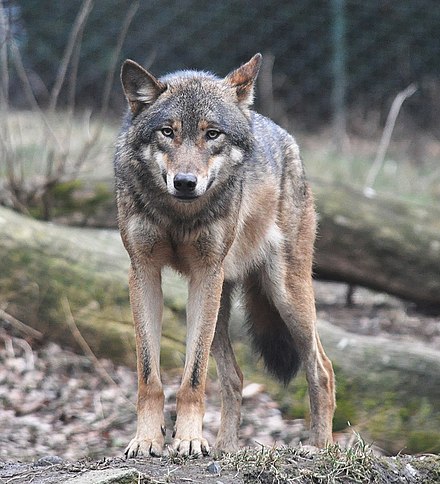The wolf (scientific name: Canis lupus) is a large carnivorous mammal that lives in groups and belongs to the Canidae family. They have diverse symbolic meanings in different mythologies and cultures, and are often associated with wildness, loyalty, wisdom, and bravery. Wolves are the wild ancestors of dogs and have close genetic ties to modern domestic dogs.

Body size: The body length of wolves is usually between 1 and 1.5 meters, the tail length is about 40 to 50 centimeters, and the shoulder height can be up to 80 centimeters. The weight varies depending on gender and region, usually between 20 and 80 kilograms.
Appearance: Wolves have a wide range of coat colors, from light gray to brown to black, and even some are white. Coat color and thick fur are key factors in how wolves adapt to different environments.
Sensors: Wolves have keen senses of hearing and smell that help them locate prey and companions.
Social structure: Wolves live in groups, usually a group is called a wolf pack. A wolf pack is led by a pair of alpha wolves (one male and one female), who are usually the only breeding pairs in the group. Other members of the group include their offspring and other relatives.
Territoriality: Wolves will establish territories and display strong territoriality towards other wolves.
Hunting and Food: Wolves primarily hunt large ungulates such as deer, elk, and bison in packs. They will also eat smaller prey such as rabbits, birds, fish and even insects. Wolves use hunting techniques of roundup, pursuit, and ambush.
Communication: Wolves are known for their unique communication methods, which include howls, body postures and facial expressions. Howls are used to define territory, gather dispersing pack members, and communicate within the pack.
Habitat: Wolves are a highly adaptable species. Their habitats span North America, Eurasia, and some areas in the Middle East, from the ice sheets of the Arctic to forests, mountains, grasslands, and even deserts.
Population status: Although wolf populations were once in danger in some places due to environmental damage and hunting, in many areas their populations have recovered or are protected.
Wolves usually breed in late winter or early spring, and the number of wolf pups born in each litter is usually 4 to 6. Puppies are weaned at about two months old and begin to learn hunting and other survival skills from the adults.
In many places, wolves are hunted because they are considered a threat to livestock, or because people fear and misunderstand them. Many countries and regions have implemented various forms of conservation measures, banning or restricting wolf hunting. Environmentalists and scientists are working hard to improve the living conditions of wolves and promote the concept of peaceful coexistence between humans and wolves.
Although humans have had conflicts with wolves throughout history, increased research and conservation awareness of wolves has led to an increasing awareness of their role in ecosystems. Wolves can promote the health of the food chain and ecosystem in which they live, such as by controlling the number of herbivores and helping to maintain the ecological balance of grasslands and forests.
The living habits and roles of wolves demonstrate their irreplaceable status in nature and the importance of protecting wildlife in maintaining biodiversity and ecosystem health.
animal tags: Wolf
We created this article in conjunction with AI technology, then made sure it was fact-checked and edited by a Animals Top editor.